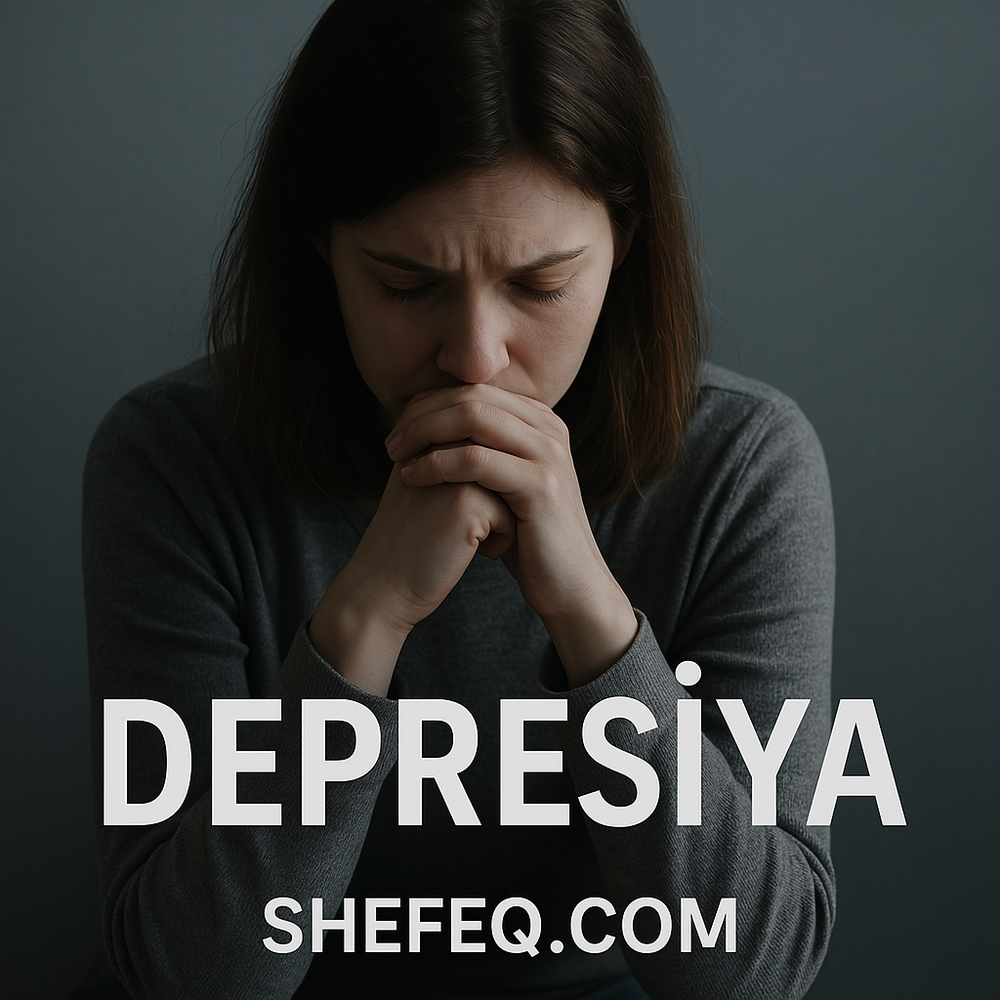INTRODUCTION
Depression is a mental disorder that significantly affects a person's emotional state, way of thinking, and daily functioning. It is not merely "feeling low" or "being sad," but rather a serious condition that often results from a chemical imbalance in the brain and frequently requires medical intervention. According to the World Health Organization (WHO), depression is one of the most widespread mental illnesses globally, affecting approximately 280 million people.
This article will thoroughly explain the causes, types, symptoms, diagnosis, treatment methods, and prevention strategies for depression. The goal is to enhance understanding of this issue both on a personal and societal level, and to clarify the ways to combat it.
1. DEFINITION AND HISTORY OF DEPRESSION
1.1. What is Depression?
The term "depression" originates from the Latin word deprimere, meaning "to press down." It describes a state where an individual feels emotionally collapsed, drained of energy, and lacking motivation for life.
1.2. Historical Perspective
The concept of depression dates back to ancient times. The ancient Greeks referred to this condition as "melancholia," attributing it to an excess of black bile, one of the four bodily humors. The famous physician Hippocrates regarded such states as natural phenomena. In the Middle Ages, depression was often viewed as a result of "demonic influence." However, with the advancement of medicine and psychology in modern times, depression began to be explained within a scientific context.
2. SYMPTOMS OF DEPRESSION
Depression can manifest differently in each individual. However, common symptoms include:
-
Prolonged feelings of sadness and hopelessness
-
Decreased interest or pleasure in activities
-
Sleep disturbances (insomnia or oversleeping)
-
Fatigue and lack of energy
-
Feelings of worthlessness and guilt
-
Difficulty concentrating and indecisiveness
-
Changes in appetite (loss or increase)
-
Suicidal thoughts or attempts
3. TYPES OF DEPRESSION
3.1. Major Depressive Disorder
This is the most common form and significantly disrupts daily life. Symptoms last for more than two weeks and greatly reduce functioning.
3.2. Dysthymia (Chronic Depression)
A milder but longer-lasting form (two years or more). The person often feels "constantly down."
3.3. Bipolar Disorder
Formerly known as manic-depressive illness, this condition involves alternating episodes of high energy (mania) and deep depression.
3.4. Postpartum Depression
Occurs in women after childbirth and can hinder the bonding process between mother and baby.
3.5. Seasonal Affective Disorder
A form of depression that arises mainly in winter due to reduced sunlight exposure.
4. CAUSES OF DEPRESSION
4.1. Biological Factors
-
Imbalance in neurotransmitters such as serotonin, dopamine, and norepinephrine
-
Hormonal disturbances (e.g., thyroid issues)
-
Genetic predisposition: a family history of depression increases risk
4.2. Psychological Factors
-
Childhood trauma
-
Low self-esteem
-
Constant criticism and psychological abuse
4.3. Social Factors
-
Unemployment
-
Financial difficulties
-
Social isolation
-
Loss of a loved one or divorce
5. DIAGNOSIS OF DEPRESSION
Diagnosis is usually made through psychological evaluation. A psychiatrist or clinical psychologist conducts interviews to assess the severity and duration of symptoms.
In some cases, medical tests (blood work, hormone levels) may be needed to rule out physical causes.
6. TREATMENT METHODS
6.1. Psychotherapy
-
Cognitive Behavioral Therapy (CBT) – aims to change negative thinking patterns
-
Psychodynamic Therapy – explores how childhood experiences affect current emotional issues
-
Group and Family Therapy – helps build social support systems
6.2. Pharmacological Treatment
-
Antidepressants (SSRIs, SNRIs, TCAs, etc.)
-
Dosage adjustment under medical supervision is essential
-
Effects usually begin within 2–4 weeks
6.3. Alternative Methods
-
Meditation and yoga
-
Physical activity (exercise boosts serotonin)
-
Music and art therapy
6.4. In Severe Cases
-
Electroconvulsive Therapy (ECT) – used when medication is ineffective
-
Inpatient treatment – for cases with high suicide risk
7. SUICIDE RISK AND PREVENTION
Depression is a leading psychiatric disorder associated with suicide. In such cases, timely medical intervention is vital. Pay close attention to these signs:
-
Talking about the meaninglessness of life
-
Speaking about suicide
-
Unexpectedly giving away valuables
-
Saying goodbye to loved ones
Seeking help is not weakness — it is a sign of courage.
8. PREVENTION OF DEPRESSION
-
Regular physical activity
-
Healthy diet — omega-3s, vitamin B12, and magnesium play key roles
-
Maintaining social connections
-
Adhering to a proper sleep schedule
-
Stress management — breathing exercises, mindfulness
9. THE ROLE OF SOCIETY
Societal stereotypes and stigma around depression can worsen the issue. Phrases like "Only weak people get depressed" or "It'll pass" only further isolate the person suffering.
Public education, as well as psychological support services in schools and workplaces, can help detect and treat depression early.
CONCLUSION
Depression is a condition that can affect anyone but is treatable with timely intervention. Combating this illness is not just a personal responsibility — it is also a duty shared by society and the healthcare system. A healthy society is built upon individuals with healthy minds. Showing understanding and support to ourselves and others is one of the most important steps on this journey.

